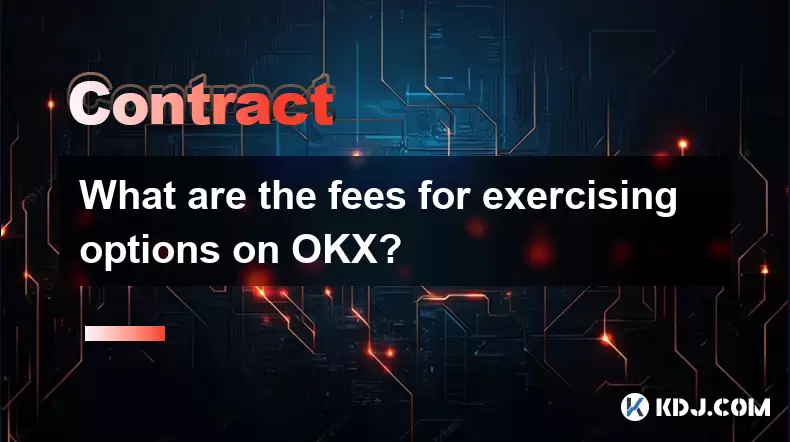-
 Bitcoin
Bitcoin $119900
0.91% -
 Ethereum
Ethereum $4576
8.55% -
 XRP
XRP $3.264
4.05% -
 Tether USDt
Tether USDt $0.9998
-0.05% -
 BNB
BNB $834.7
4.17% -
 Solana
Solana $191.8
9.96% -
 USDC
USDC $0.9998
-0.02% -
 Dogecoin
Dogecoin $0.2363
6.08% -
 TRON
TRON $0.3525
2.56% -
 Cardano
Cardano $0.8419
9.12% -
 Chainlink
Chainlink $23.19
9.97% -
 Hyperliquid
Hyperliquid $44.97
4.53% -
 Stellar
Stellar $0.4489
4.20% -
 Sui
Sui $3.876
6.19% -
 Bitcoin Cash
Bitcoin Cash $618.1
7.14% -
 Hedera
Hedera $0.2617
6.55% -
 Ethena USDe
Ethena USDe $1.000
-0.03% -
 Avalanche
Avalanche $24.61
7.96% -
 Litecoin
Litecoin $131.7
9.52% -
 Toncoin
Toncoin $3.502
3.62% -
 UNUS SED LEO
UNUS SED LEO $9.093
1.32% -
 Shiba Inu
Shiba Inu $0.00001358
5.37% -
 Uniswap
Uniswap $11.50
5.05% -
 Polkadot
Polkadot $4.150
7.77% -
 Dai
Dai $0.9997
-0.05% -
 Cronos
Cronos $0.1650
-0.75% -
 Ethena
Ethena $0.7981
2.06% -
 Pepe
Pepe $0.00001216
8.64% -
 Bitget Token
Bitget Token $4.467
1.74% -
 Aave
Aave $319.2
9.18%
What are the fees for exercising options on OKX?
OKX does not charge a direct fee to exercise options, but users may incur costs from margin usage, trading fees, or network fees upon settlement.
Aug 12, 2025 at 05:56 pm

Understanding Option Exercise on OKX
When trading options on OKX, users have the right—but not the obligation—to buy or sell an underlying asset at a predetermined price before or at expiration. Exercising an option means activating that right. On OKX, this process is automated for in-the-money (ITM) options at expiration, while early exercise is available for American-style options. The platform supports both European and American-style options, with fee structures varying depending on the type of option and the method of settlement.
It is crucial to understand that OKX does not charge a separate fee for exercising an option. Instead, the cost implications arise from the settlement process, margin usage, and potential funding or transaction fees tied to the underlying asset transfer. The absence of a direct exercise fee does not imply zero cost; users must account for indirect financial impacts during the exercise or assignment process.
Fees Associated with Physical vs. Cash Settlement
Options on OKX can be settled either in cash or through physical delivery, depending on the specific contract. For cash-settled options, the profit or loss is calculated in the quote currency (e.g., USDT), and the net amount is credited or debited from the user’s account. There are no additional fees imposed by OKX for this settlement type. However, if the settlement involves conversion between currencies or withdrawal afterward, external network or conversion fees may apply.
In contrast, physically settled options require the transfer of the underlying asset (e.g., BTC or ETH). While OKX does not charge for the delivery itself, on-chain transaction fees may be incurred if the asset is withdrawn post-exercise. These fees depend on the blockchain network congestion and are not controlled by OKX. Users should monitor gas fees or withdrawal costs on supported networks like Ethereum, TRON, or OKC when planning to move assets after exercise.
Margin and Funding Implications for Option Exercise
Exercising a call option requires the buyer to pay the strike price in full, while the seller must deliver the underlying asset. In a margin-based account, this transaction affects the user’s available balance and margin utilization. Although OKX does not charge an exercise fee, insufficient margin may lead to liquidation or partial execution, especially during volatile market conditions.
For futures-backed options, the exercise results in the automatic creation of a futures position. For example, exercising a BTC-USD call option may result in a long BTCUSD futures contract at the strike price. Any maintenance margin or funding rate associated with the resulting futures position is subject to standard futures trading fees and funding payments. These are not exercise fees per se but are operational costs users must anticipate.
Early Exercise and Assignment Costs
American-style options on OKX allow early exercise, which can be initiated manually by the buyer. While there is no fee for submitting an early exercise request, doing so may be suboptimal due to the loss of extrinsic (time) value. The system processes early exercise requests based on available balance and position limits.
When a user’s short option position is assigned (i.e., the counterparty exercises), the system automatically closes or adjusts the position. No assignment fee is charged. However, if the assignment leads to a spot or futures transaction, standard taker fees apply if the resulting trade matches against existing orders in the order book. These taker fees vary based on the user’s fee tier, determined by 30-day trading volume and OKB holdings.
- Ensure sufficient balance in the relevant currency before requesting early exercise
- Monitor open interest and implied volatility, as high volatility increases early exercise likelihood
- Review the option’s Greeks, especially theta and delta, to assess whether early exercise is economically rational
- Confirm the settlement type (cash or physical) to anticipate asset movement or funding needs
Fee Structure for Related Transactions
Although OKX does not impose a direct charge for exercising options, related transactions may incur fees. For instance, converting the received payout into another cryptocurrency involves a spot trading transaction, which is subject to standard maker or taker fees. These fees range from 0.08% (maker) to 0.1% (taker) for spot pairs, depending on the user’s fee level.
If the exercised option results in a futures position, subsequent closing trades are subject to futures trading fees. These are typically lower, with maker fees as low as 0.02% and taker fees around 0.05%. Users holding OKB can reduce these fees further by up to 40% when paying fees in OKB.
Additionally, withdrawing assets received from physical delivery triggers blockchain network fees. For example, withdrawing BTC after exercise will incur a BTC network fee, which fluctuates based on mempool congestion. OKX displays the estimated fee before confirmation, allowing users to choose between priority and standard withdrawal speeds.
How to Check Fees Before Exercising
To avoid unexpected costs, users should review all potential fees before exercising an option. Navigate to the Options Trading Interface on OKX and select the specific contract. Click on the "Exercise" button (if available for early exercise) to see a preview of the transaction.
- The system will display the strike price, quantity, and total cost in quote currency
- For physical delivery, confirm the underlying asset and your wallet balance
- Check the futures or spot fee schedule under the "Fees" section in Account Settings
- Use the fee calculator tool (if available) to estimate taker/maker costs on closing trades
- Monitor OKB balance to determine eligibility for fee discounts
Ensuring clarity on these details helps prevent margin calls or failed transactions due to insufficient funds.
Frequently Asked Questions
Does OKX charge a fee when I am assigned on a short option?
No, OKX does not charge an assignment fee. When a short option is assigned, the system automatically settles the position based on the contract terms. However, any resulting futures or spot trades may incur standard trading fees if they act as taker orders.
Are there hidden costs in exercising deep in-the-money options?
While there are no hidden fees, exercising deep ITM options early may result in loss of remaining extrinsic value. It is often more profitable to sell the option instead of exercising, especially if time value remains.
Will I pay network fees if I exercise a cash-settled option?
No, cash-settled options do not involve asset transfer, so no blockchain fees apply. The settlement amount is credited directly to your OKX account in the settlement currency (e.g., USDT).
Can I reduce the trading fees after exercising an option?
Yes, you can reduce fees by holding OKB and selecting OKB to pay fees. Additionally, increasing your 30-day trading volume on OKX can upgrade your fee tier, lowering both maker and taker rates on subsequent trades.
Disclaimer:info@kdj.com
The information provided is not trading advice. kdj.com does not assume any responsibility for any investments made based on the information provided in this article. Cryptocurrencies are highly volatile and it is highly recommended that you invest with caution after thorough research!
If you believe that the content used on this website infringes your copyright, please contact us immediately (info@kdj.com) and we will delete it promptly.
- Unich's OTC Exchange: Surging with $1.2B Volume – What's the Hype?
- 2025-08-13 02:50:11
- MoonBull's Explosive Moves: Your Crypto Whitelist Ticket to Ride!
- 2025-08-13 02:30:11
- MAGACOIN Finance: Don't Miss the Presale Bonus!
- 2025-08-13 02:30:11
- Trump's Crypto Kingdom: $2.4 Billion and Counting
- 2025-08-13 02:50:11
- Solana, LSTs, and SEC Approval: A New Dawn for Crypto?
- 2025-08-13 02:55:12
- Bitcoin's Profit Surge: Unpacking the BTC Value Boom
- 2025-08-13 02:55:12
Related knowledge

Is it possible to adjust the leverage on an open position on KuCoin?
Aug 09,2025 at 08:21pm
Understanding Leverage in KuCoin Futures TradingLeverage in KuCoin Futures allows traders to amplify their exposure to price movements by borrowing fu...

What cryptocurrencies are supported as collateral on KuCoin Futures?
Aug 11,2025 at 04:21am
Overview of KuCoin Futures and Collateral MechanismKuCoin Futures is a derivatives trading platform that allows users to trade perpetual and delivery ...

What is the difference between realized and unrealized PNL on KuCoin?
Aug 09,2025 at 01:49am
Understanding Realized and Unrealized PNL on KuCoinWhen trading on KuCoin, especially in futures and perpetual contracts, understanding the distinctio...

How does KuCoin Futures compare against Binance Futures in terms of features?
Aug 09,2025 at 03:22am
Trading Interface and User ExperienceThe trading interface is a critical component when comparing KuCoin Futures and Binance Futures, as it directly i...

How do funding fees on KuCoin Futures affect my overall profit?
Aug 09,2025 at 08:22am
Understanding Funding Fees on KuCoin FuturesFunding fees on KuCoin Futures are periodic payments exchanged between long and short position holders to ...

What is the distinction between mark price and last price on KuCoin?
Aug 08,2025 at 01:58pm
Understanding the Basics of Price in Cryptocurrency TradingIn cryptocurrency exchanges like KuCoin, two key price indicators frequently appear on trad...

Is it possible to adjust the leverage on an open position on KuCoin?
Aug 09,2025 at 08:21pm
Understanding Leverage in KuCoin Futures TradingLeverage in KuCoin Futures allows traders to amplify their exposure to price movements by borrowing fu...

What cryptocurrencies are supported as collateral on KuCoin Futures?
Aug 11,2025 at 04:21am
Overview of KuCoin Futures and Collateral MechanismKuCoin Futures is a derivatives trading platform that allows users to trade perpetual and delivery ...

What is the difference between realized and unrealized PNL on KuCoin?
Aug 09,2025 at 01:49am
Understanding Realized and Unrealized PNL on KuCoinWhen trading on KuCoin, especially in futures and perpetual contracts, understanding the distinctio...

How does KuCoin Futures compare against Binance Futures in terms of features?
Aug 09,2025 at 03:22am
Trading Interface and User ExperienceThe trading interface is a critical component when comparing KuCoin Futures and Binance Futures, as it directly i...

How do funding fees on KuCoin Futures affect my overall profit?
Aug 09,2025 at 08:22am
Understanding Funding Fees on KuCoin FuturesFunding fees on KuCoin Futures are periodic payments exchanged between long and short position holders to ...

What is the distinction between mark price and last price on KuCoin?
Aug 08,2025 at 01:58pm
Understanding the Basics of Price in Cryptocurrency TradingIn cryptocurrency exchanges like KuCoin, two key price indicators frequently appear on trad...
See all articles

























































































